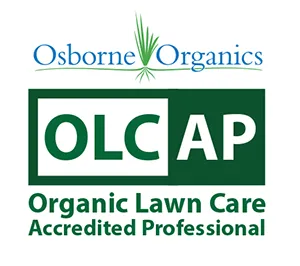Expert Lawn Care in Rockland County, NY
Expert Lawn Care Services in Rockland County, NY
Your lawn is the carpet of your outdoor space and keeping it looking and performing its best is important to you. That means that you want great color, thickness, and growth— without a lot of weeds detracting from its overall beauty.
Of course, if you’ve ever tried to perform lawn care services or weed control on your own, then you probably already know there’s more involved than you once realized. Achieving a beautiful lawn is both a science and an art and it takes a lot of know-how and experience in terms of product application and timing.
At Majestic Lawn Care & Landscape, our conventional lawn care program will give you confidence you’ll receive the results you desire thanks to proper timing and application methods.
What the Program Includes
Our lawn care program includes 6 visits (minimum) to address what your lawn needs at key times of the year.
In addition to these, lime and gypsum applications would be additional visits and may be needed if your lawn’s pH is unbalanced. We also recommend aeration and over-seeding, two additional lawn care services that will help achieve the lush green lawn you’re after.
Early Spring
High nitrogen fertilizer and pre-emergent crabgrass control
Late Spring
Second fertilizer application, with less nitrogen (focused on balancing fertility) along with a second application of crabgrass control
Summer
Post-emergent weed control and grub control (if needed)
Late Summer
Post-emergent crabgrass control for any breakthrough
Early Fall
Fertilizer with the addition of iron and additional post-emergent crabgrass control
Late Fall
A final balancing of the fertilizer to prepare for winter and additional weed control to prevent winter weeds
Other Lawn Care Options
There’s more ways to take care of a lawn than the typical methods.
In addition to conventional lawn care, we also offer organic lawn care, aeration, and over-seeding services.
Organic Lawn Care
Conventional fertilizers aren’t the only way to make your grass green. If you’re looking for a different approach to lawn care—one that is more focused on soil biology and natural performance—then you may be looking for organic lawn care.
Aeration & Overseeding
Is your lawn getting thin, turning brown or developing spots that just don’t look as good as they should? Over time, most soil becomes compacted or hard, and your turf has trouble filling in those thin and browning spots. If any of this sounds familiar, aeration and overseeding might just be what you need.
Organic Lawn Care
At Majestic Lawn Care & Landscape, we offer an Organic Lawn Care program that works with what’s beneath the surface—which is actually what matters most. The truth is, your lawn’s performance is dependent upon the health of your soil. Naturally healthy soil is packed with beneficial microorganisms like bacteria and fungi which actually help your grass to digest nutrition.
With our Organic Lawn Care program, we can assist in building the health of your soil with our All-Natural Organic Fertilizers and soil supplements which will encourage soil biology. Organic lawn fertilizer works with nature by feeding the soil and in turn allowing the soil to feed your lawn.
All-Natural Premium Organic Fertilizer
Our program includes three applications of All-Natural Premium Organic Fertilizer. It also includes the use of soil amendments like lime/gypsum and soil conditioner when they’re needed. We can also incorporate a Compost Tea into your program, which is a liquid extract that contains plant growth compounds and beneficial microorganisms which are used to build even more soil microbial populations.
With these efforts, coupled with some of our other beneficial lawn care services, you can have a lawn that is thriving naturally. This will have the added benefits of helping your lawn to naturally defend itself against threats like disease, pests, and even environmental stressors like drought. As the health of your lawn improves, it will even be able to better defend itself against weeds.
If you want to discover the hidden secret to a healthy lawn, then you need to look beneath the surface. With our Organic Lawn Care program, we’ll get your soil on its way to optimal health so that your lawn can reap the benefits.

Aeration & Overseeding
All lawns, regardless of their condition, can benefit from some level of renovation every year or so. One of the best means of rejuvenating turf is to combine the power of professional aeration with overseeding. During aeration, a machine known as a core aerator pulls plugs of soil and thatch up from the lawn to break up compacted soil and create more room for air, water and fertilizer to reach the roots. This results in the expansion of the root system for thicker, healthier grass. Aeration also helps to break up thatch, which can prevent water, fertilizer, and insect controls from reaching the soil if it gets too thick. Along with your aeration, you may want to consider a gypsum application to further reduce the compaction of your soil and help release nutrients trapped within the clay.
Following up with overseeding is a great way to thicken up a thin lawn or add a hardier, more drought-resistant grass variety to your property. Good seed-to-soil contact is essential for seeding success, and the new grass seed will have an easier time growing in the holes left behind by aeration. Keep in mind that if your lawn has been seeded, the soil should be kept moist by watering newly seeded areas 20 minutes per day until the new grass is established.
Our Process
Fill out a form or give us a call and we will be right out to discuss the needs of your properties. After that, we will discuss which maintenance program will fit your best. Then our team will transform your landscape with the implementation of the Landscape Management Plan.
